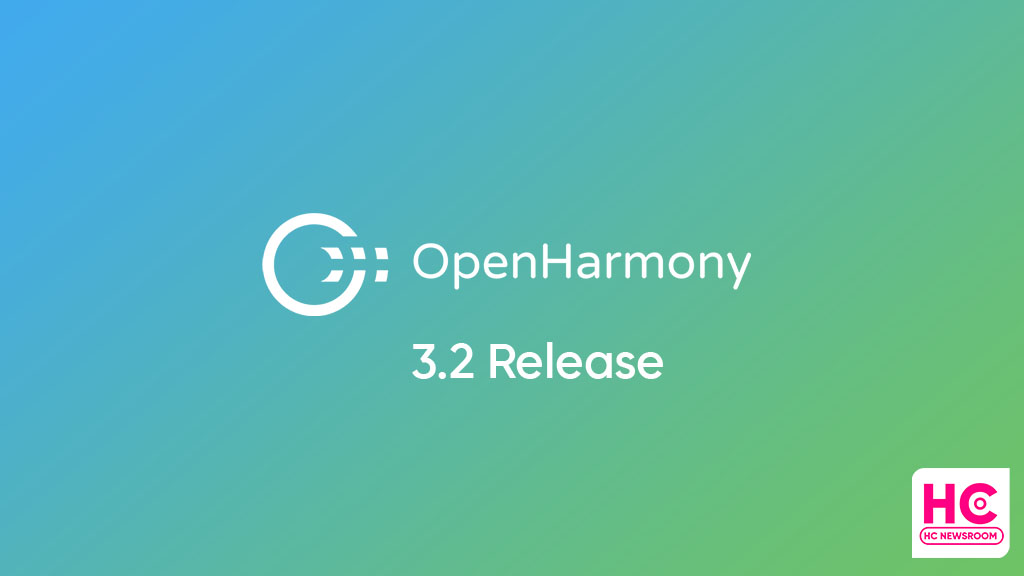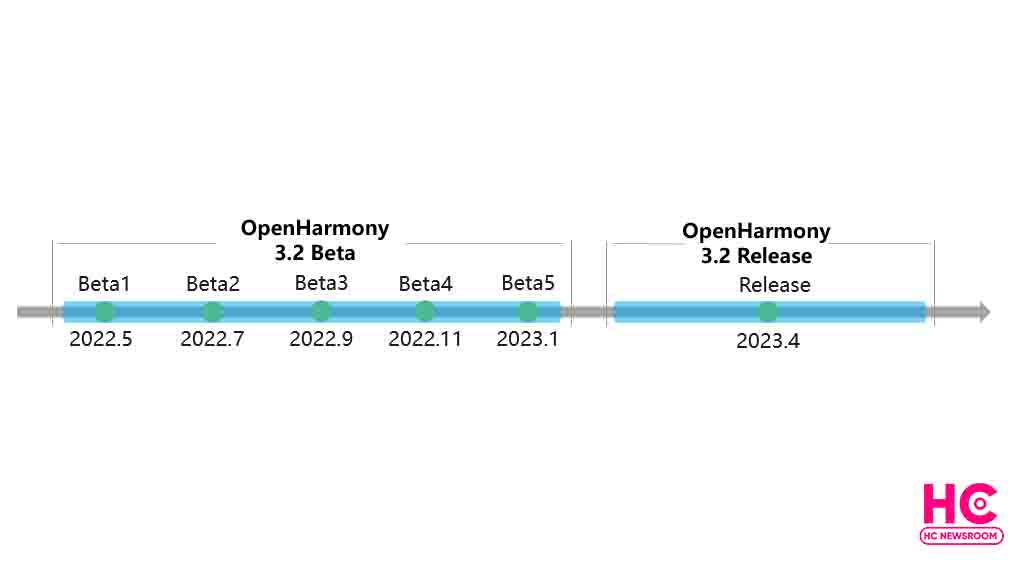News
Open Source HarmonyOS 3.2 version released

Today, OpenAtom uploaded the released version of open source HarmonyOS 3.2, OpenHarmony. With version 3.2, the standard system capabilities have been further improved, supporting the use of ArkTS language for large-scale applications and atomized service development.
The optimization of ArkCompiler and the Taskpool mechanism improves application performance. ArkUI components and animation capabilities are enhanced, graphics rendering capabilities and system security capabilities are enhanced, and distributed business development is enriched.
OpenHarmony 3.2 Release version provides API Level 9 stable interfaces. The complete milestone of OpenHarmony version 3.2 is shown in the figure below. Read this document to learn more about key features and capabilities.
Below you can check some of the newest additions to this major release.
ArkUI:
- Support XComponent control, which can be used to write EGL/OpenGL ES and media data, and display them in XComponent component. Through XComponent component, cooperate with NDK capability to build C++/ArkTS mixed development capability, support game, and media application development
- Support AbilityComponent control, support embedding other applications as control (Component) display.
- Add basic ArkTS card development capabilities: support card interaction and dynamically update content; unify the development paradigm of cards and pages, and the page layout can be directly reused in the card layout to improve the card development experience and development efficiency.
- The dynamic effect capability has been enhanced, and it supports switching dynamic effects of Image scaling type.
- Enhanced transitions between pages: support semi-modal dynamic transitions, Navigation shared element transitions, custom modal switching dynamic effects; support callbacks per frame, allowing dynamic modification of drawn content.
- By default, the system supports copying, pasting, and dragging of plain text and images, and developers are not required to handle copy, paste, and drag events.
- Supports multi-level menus and grouped menus.
- Support switching dark mode/light mode, only supported by system apps.
UI:
- Enhanced interaction normalization capability, interaction normalization event docking TP, mouse, keyboard, touchpad, stylus, and ArkUI native components support normalized operation.
- Responsive layout capability optimization, enhanced media query capability, grid system reconstruction, and docking-free window.
- The ability to move focus is enhanced, it supports the Tab key and arrow keys to move focus, and it supports whether the component can be focused.
- Supports enhanced column and sidebar component capabilities, supports drag-and-drop auto-hide, and other capabilities.
- For details, please refer to the ArkUI guide.
App framework
- The Stage model, a new model in OpenHarmony API 9, provides the necessary components and operating mechanisms for applications. Developers can develop complex applications based on this model, making application development simpler and more efficient.
- Provide the Extension mechanism. With the help of an Extension, the application provides custom functions and content to other applications or systems when interacting with them. For example, the application can be displayed as a card on the system desktop or perform background tasks when the system is idle. Commonly used extensions currently supported include FormExtensionAbility, WorkSchedulerExtensionAbility, InputMethodExtensionAbility, AccessibilityExtensionAbility, and more.
- Atomic services support sub-package preloading to improve the first-time loading performance of services.
- Supports HSP (Harmony Shared Package) dynamic sharing package, and supports the sharing of code and resources within and between applications.
- Provide a Purgeable memory management mechanism to realize quick release and reconstruction of memory.
- For an object that occupies a large amount of memory and is not frequently modified, the application uses the Purgeablemem API to declare it as a portable object, and at the same time declare the reconstruction method of the object. When the object is recycled by the system, the application will pass the above method before accessing the object to rebuild.
There are many new additions to open source HarmonyOS 3.2 release version and you can check all of them here on the official version release notes.







